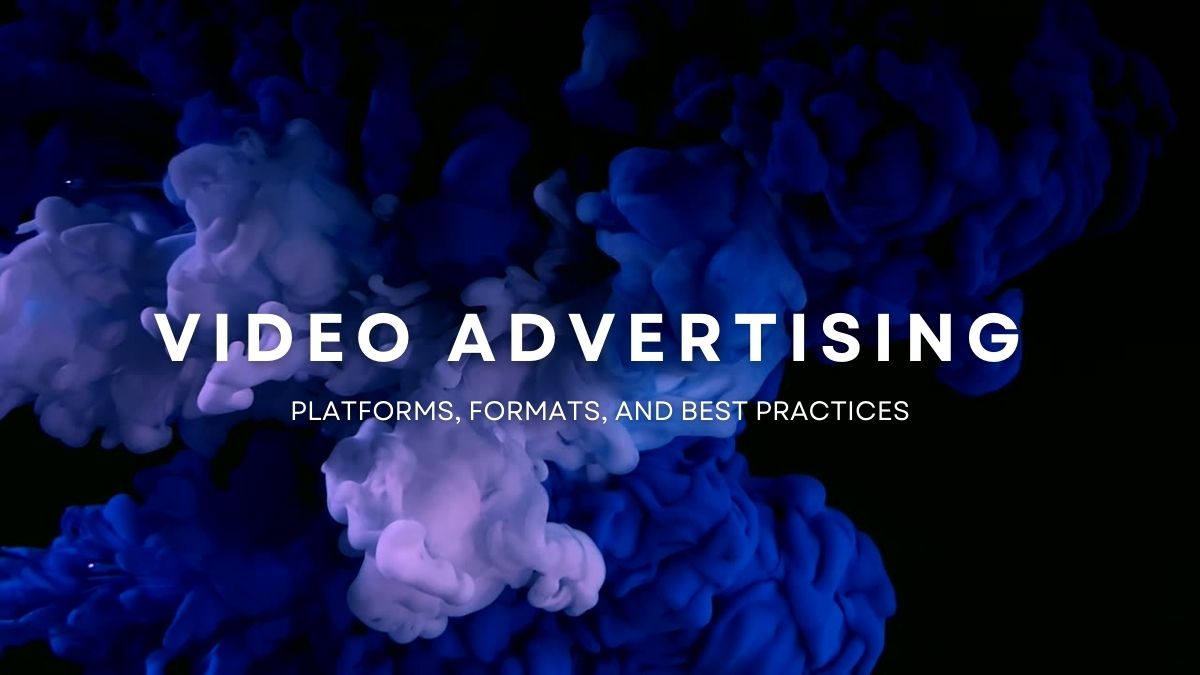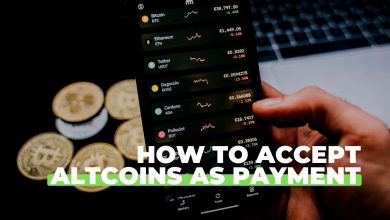
In today’s digital landscape, video advertising has become a powerful tool for businesses to engage their audience and convey their brand message effectively. With numerous platforms and formats available, it’s essential to understand the landscape and best practices to maximize the impact of your video advertising campaigns. In this blog post, we will explore popular video advertising platforms, different formats to consider, and best practices to help you create successful video campaigns.
Popular Video Advertising Platforms:
1. YouTube:
YouTube is the most popular video advertising platform in the world. With over two billion monthly active users, it provides businesses with a vast audience to reach out to. Advertising on YouTube offers an array of benefits for companies looking to gain exposure and increase their revenue. For instance, businesses can target their ads based on demographics such as age, gender, location, interests, and even search history.
With YouTube’s targeting options, companies can be sure that they are reaching out to the right people who are more likely to engage with their ads. Additionally, YouTube offers various ad formats that businesses can choose from depending on their goals and budget.
2. Facebook:
Facebook is a popular video advertising platform that offers several opportunities for businesses to reach their target audience through videos. The in-stream ads are a great way to showcase your products or services during videos on Facebook. These ads play before, during, or after the video content and can be customized to fit your brand’s needs. In addition, in-stream ads have an option for viewers to skip the ad after 5 seconds, making it more user-friendly.
Another great opportunity for video advertising on Facebook is through stories. Stories are short-form vertical videos that appear at the top of the News Feed and disappear after 24 hours. They offer a unique chance for brands to engage with their audience on a personal level as they can share behind-the-scenes footage or exclusive promotions. Moreover, advertisers can use creative tools like stickers and filters to make their stories stand out.
3. Instagram:
Instagram is one of the most popular social media platforms around, with over a billion monthly active users. With such a vast audience, businesses have been using Instagram as an advertising platform for some time now. One of the best ways to reach your target audience on Instagram is by leveraging video ads on this visually appealing platform.
Video ads are becoming increasingly popular among advertisers as they tend to catch people’s attention more effectively than static images or text-based ads. Not only do video ads grab attention, but they also provide a better opportunity for brands to showcase their products in action and highlight their unique selling points.
Instagram’s visually oriented format makes it the go-to platform for businesses looking to create and share engaging video content with their audiences.
4. TikTok:
TikTok has emerged as one of the most popular video advertising platforms in recent times. The rise of short-form video content and the app’s massive user base has made it an attractive platform for advertisers looking to reach a younger demographic. With over 1 billion active users, TikTok has quickly become one of the hottest social media platforms around.
What sets TikTok apart from other social media platforms is its unique audience and creative opportunities. The app is popular among Gen Z and millennials who are known for their love of creativity, authenticity, and humor. This makes it a perfect platform for brands that want to create engaging content that resonates with this audience. Additionally, the app’s algorithm enables content to go viral quickly, making it easier for brands to gain exposure at a faster pace.
Different Video Ad Formats:
1. Pre-roll Ads:
Pre-roll ads have become a popular video ad format and are widely used across various digital platforms. These ads play before the main content, allowing advertisers to grab the attention of viewers before watching their desired video. Pre-roll ads can range from skippable to non-skippable, and typically last between 15-30 seconds. While this format has its benefits, it also poses some challenges for advertisers.
One of the advantages of pre-roll ads is that they allow for more targeted advertising. By placing an ad in front of content that aligns with their target audience’s interests, advertisers can increase the chances of engagement and conversions. Additionally, pre-roll ads provide high visibility for brands and often result in increased brand awareness.
However, one major challenge with pre-roll ads is ensuring that viewers don’t skip them.
3. In-stream Ads:
In-stream ads are a popular video ad format that appears during streaming content, such as those found on YouTube and other video platforms. These ads are displayed in the middle of the content and can be either skippable or non-skippable. Skippable ads give viewers the option to skip the advertisement after a few seconds, while non-skippable ads force viewers to watch the entire ad before continuing with their chosen content.
These types of ads have become increasingly popular due to their ability to reach a wide audience and generate significant revenue for advertisers. In-stream ads are also highly effective in driving engagement and conversion rates because they appear while viewers are already engaged in watching videos. Additionally, these types of ads allow for targeting based on demographics, interests, and behaviors.
However, advertisers need to use in-stream ads strategically to avoid interrupting the viewer experience and causing frustration.
4. Native Video Ads:
Native video ads are a relatively new format of advertising that has been gaining popularity in recent years. The concept of native video ads involves seamlessly blending the ad content with the user’s browsing experience, making it feel less intrusive and more natural. By doing so, brands can promote their products or services without disrupting the user’s experience and potentially driving them away.
The key to successful native video ads is creating engaging content that aligns with the interests of the target audience. Brands need to understand their audience’s needs and preferences to create relevant videos that will capture their attention. Additionally, it’s essential to ensure that the ad content is not too commercial or sales-y but instead provides value in terms of information, entertainment, or education.
One major advantage of native video ads is their ability to generate higher engagement rates than traditional display ads.
5. Social Media Stories:
Social media stories are a new and highly engaging format for video ads on popular platforms like Facebook, Instagram, and Snapchat. These short-form videos offer an immersive experience that captures the attention of users scrolling through their feeds. Video ads in stories have become an increasingly important tool for businesses to reach their target audience with a more personalized approach.
The rise of social media stories has created a unique opportunity for advertisers to showcase their products or services interactively. With features like swipe-up links and shoppable stickers, brands can seamlessly integrate their messaging into the user’s experience while offering them a convenient way to learn more or make a purchase. The format also allows for experimentation with different creative styles, from stop-motion animation to live-action footage.
One of the biggest advantages of video ads within social media stories is the ability to target specific audiences using advanced targeting techniques.
6. Outstream Ads:
Outstream ads are a relatively new type of video ad format that has been gaining popularity in recent years. In contrast to traditional video ads, which play before, during, or after a piece of content, out-stream ads autoplay within text-based articles or mobile apps. This means that the user doesn’t have to watch the ad if they don’t want to.
The beauty of out-stream ads is their ability to blend seamlessly into the surrounding content. They are non-intrusive and provide a better user experience than traditional video ads because they allow users to continue reading or browsing while still being exposed to advertising. Outstream ads can appear on any device, from desktops to smartphones and tablets, making them highly versatile for advertisers targeting different audiences.
One of the key benefits of using out-stream ads is their potential for higher engagement rates than other types of video ad formats.
Best Practices for Video Advertising:
1. Grab Attention Quickly:
In the world of video advertising, capturing viewers’ attention is everything. With so much content readily available online, it’s crucial to grab their attention quickly to ensure they continue watching. The first few seconds of a video can make or break its success, which is why understanding the best practices for captivating viewers is essential.
One way to grab attention quickly is through the use of visual storytelling. This involves using visuals that relate to your message and tell a story without relying on text or dialogue. By doing this, you can quickly capture viewers’ interest and encourage them to keep watching. Another effective technique is incorporating humor into your videos. Humor helps create an emotional connection with your audience and provides entertainment value that keeps them engaged.
Another important aspect of grabbing viewers’ attention is ensuring that your videos are optimized for mobile devices.
2. Tell a Compelling Story:
Video advertising has become a powerful tool for businesses to reach their target audience and increase brand awareness. However, creating a video ad that resonates with your audience, evokes emotions, and aligns with your brand message can be challenging. The key to crafting an effective video ad is to tell a compelling story that captivates your viewers.
To begin with, identify the core message of your brand and how you want it to be communicated through the video. Once you have identified this, create a storyboard or script that tells a story about your brand in an engaging way. A good narrative should aim to connect emotionally with the viewer by incorporating relatable characters or situations.
Additionally, keep in mind the length of the video and ensure that it is concise yet impactful. Utilize visuals such as animations or real-life footage to complement the story being told.
3. Optimize for Mobile:
It’s no secret that mobile has taken over as the primary device for video consumption. Studies have shown that mobile devices account for more than 70% of all online video plays. With such a significant shift in consumer behavior, marketers must recognize the importance of optimizing their ads for seamless viewing on mobile devices.
To start, one of the best practices for video advertising on mobile is to keep your videos short and sweet. People are often watching videos while on the go or during short breaks throughout their day, so keeping your ad concise and to the point will help ensure viewers stay engaged. Additionally, make sure your ad is optimized for vertical viewing since most people hold their phones vertically while browsing.
Another key factor to consider when optimizing your ads for mobile is page load time.
4. Clear Call to Action:
Video advertising has become an essential part of marketing strategies. An engaging video ad can help businesses reach a wider audience and increase brand awareness. However, creating an effective video ad goes beyond just having great content and visuals. A clear call to action (CTA) is crucial to ensure that viewers are directed toward the desired next step.
When creating a video ad, it’s important to keep your CTA short while still being actionable. Use phrases such as “Click here,” “Subscribe now,” or “Shop today” to ensure that viewers understand what action they need to take after watching the video. Additionally, consider placing the CTA at strategic points throughout the video, such as at the beginning or end, or during a particularly compelling moment.
Aside from being direct in your language, make sure that your CTA stands out visually in your ad.
5. A/B Testing and Analytics:
Video advertising has become an essential component of digital marketing strategies, and there are several best practices that marketers need to follow to ensure the success of their campaigns. One such practice is A/B testing, which involves testing different ad elements to see which ones perform better. This can include varying the ad copy, imagery, call-to-action (CTA), or targeting criteria. By conducting A/B tests, you can determine what works best for your target audience and optimize your campaigns accordingly.
Another crucial aspect of video advertising is leveraging analytics to gain insights into campaign performance. Analytics tools provide valuable data on metrics such as impressions, click-through rates (CTR), conversions, and engagement rates. By analyzing this data, you can identify patterns and trends in how your target audience interacts with your ads. You can also track the effectiveness of different ad elements and make informed decisions on how to optimize them further.
6. Optimize Landing Pages:
Aligning your landing page with your video ad can improve conversions and provide a consistent user experience. It is important to remember that your video ad and landing page work together to create a cohesive message and drive conversions. When users click on an ad, they expect to be taken to a page that aligns with the ad’s messaging and provides them with more information.
To optimize your landing page, start by identifying the key messages in your video ad. Use these messages to create headlines, subheadings, and body copy on your landing page. This will help users connect the dots between what they saw in the video ad and what they are seeing on the landing page. Additionally, ensure that any images or graphics used in the video are also present on the landing page.
Another best practice for optimizing your landing pages is to keep them simple and focused.
Conclusion:
Video advertising presents immense opportunities to engage and connect with your target audience. By understanding the various video advertising platforms, formats, and best practices discussed in this blog post, you’ll be equipped to create impactful video campaigns that drive results for your business. Experiment, analyze, and optimize your video ads to make the most of this dynamic and influential form of digital marketing.




